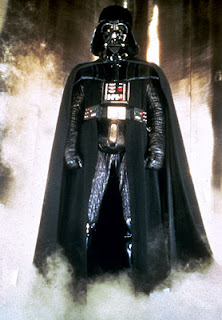
I directed a job last week that was a recipe for disaster: two eight-year-olds, one 12-month-old, a model, and a dog. To make it even more complicated, we had to shoot outside, and even though it's summer, the light was likely to change without warning.
What motivates an eight-year-old is a lot different from what motivates a professional grown up actor. You can't expect to appeal to an eight-year-old's artistic sensibilities, need to make the mortgage payment, or desire to help you do your job. You might be able to cajole a grown up into giving you one more take, but when eight-year-old is done, you're done.
A 12-month-old is an even bigger wild card. Their entire motivation comes down to two simple rules: 1) good things make them happy, bad things make them sad, and 2) they go from happy to sad a lot quicker than they go from sad to happy.
Usually worse are models. Models generally have a different approach to being in front of a camera than actors do. They are trained to move and settle, whereas actors move through actions. Most models I've worked with are so controlled that they're boring to watch move, even though they might take a great picture.
Of all the non-adult performers, I expected the dog to be the most reliable. Which she was. But even so, a dog is not a person and even the best trained dog with the easiest temperament can get set off by certain smells or sounds.
I've been doing this long enough to learn a few things that helped me avert disaster.
1) I schedule my day around my toddler. Babies take naps. Babies are also subject to a lot of legal (and common sense) restrictions in terms of how long you can work with them and how many breaks they need. I want my toddler to be done shooting a half an hour before his nap time.
Before I got into directing, I was an advertising copywriter. I went on a lot of shoots involving kids. And I'm astonished how few directors I worked with –– and I'm talking a lot of A-list guys –– even bothered to ask when the baby's nap times were. They were so concerned about taking the most advantage of the light that a lot of times we ended up with a well-lit monster.
2) I create a shot priority list. Once you lose an eight-year-old, you're not getting him or her back, so I figure out what shots I absolutely must have and get those first.
After having taken care of the kids, I schedule the rest of my day. I'm usually pretty prepared anyway, but when I have a situation as touchy as this one, my shot list looks like it was prepared by the GAO. I have columns for angles, lenses, actions, actors, and extra stuff to be prepared for. Because there's usually no going back to pick up something once you're done.
3) No matter how tight the schedule is, I build in time to establish and maintain a rapport with the kids. Eight-year-olds are more sensitive than grown ups. You can't expect them to understand that you need to move on. And if you hurt their feelings, you're going to spend more time reassuring them than you would have spent talking to them between takes and developing a relationship with them in the first place.
4) I communicate. Before we even set up the first shot, I gather my entire cast (minus the toddler, who has a later call) and explain what I hope to accomplish. I used kid-friendly language so that the eight-year-olds know what I hope to get from them, but in this case I was actually aiming my talk at a couple of the adults –– particularly the model –– because I knew I was going to need them to loosen up if I were going to get anything usable from them.
5) I encourage a relationship between the adult cast members and the kids. If you'd been at the casting session, you would probably have wondered why I spent more time talking to the actors than asking them to perform. What I was doing was looking for was people who would not only look the part and perform well, but also develop a relationship with their "kids" even when the camera wasn't rolling.
6) I pay attention to the dog when it first comes onto the set. Dogs suss out new environments and you can tell a lot by how it checks out its surroundings. If I notice that the dog's ears are back, it's crouching, or it has its tail is between its legs, everything stops until we figure out what's wrong.
We got lucky on this job, but to quote Edna Mode from 'The Incredibles', "Fortune favors the prepared." The footage looks great, the client is happy, and I can cash my check with a clear conscience.
 The world is a different place since Hitchcock either did or didn't come up with the idea of the Ham Sandwich (if you don't know what I'm talking about, read my last post).
The world is a different place since Hitchcock either did or didn't come up with the idea of the Ham Sandwich (if you don't know what I'm talking about, read my last post).






